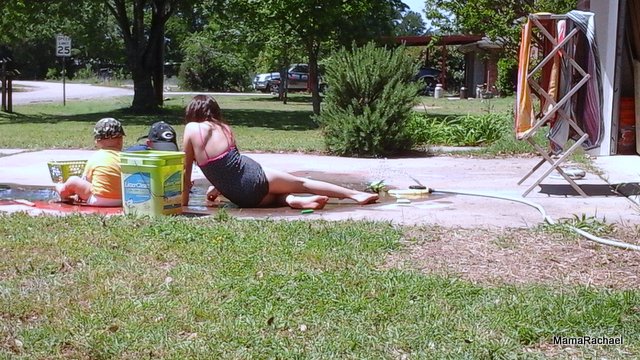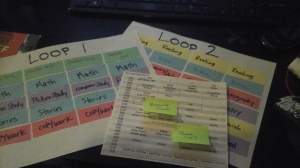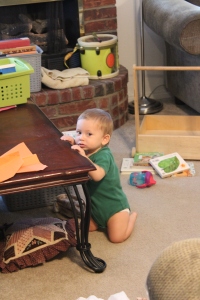I am so proud of myself! I got our timeline up and got a schedule laid out for our school time. I have felt so busy with a lot to do, and I’m struggling to keep the important separate from the merely urgent. But, in my struggle, I’m overcoming, so feeling some success.
Timeline

Charlotte Mason talks about helping children gain a sense of history:
Once Intellect admits us into the realms of History, we live in a great and stirring world, full of entertainment and sometimes of regret; and at last we begin to understand that we, too, are making History, and that we are all part of the whole; that the people who went before us were all very like ourselves, or else we should not be able to understand them. (Ourselves, pg 37)
Plan to work with Little Man to create a personal timeline of a sort, but I think our timeline on the wall will help put all the various things we read about into perspective. As we come across something in our reading, I’m creating little 2 inch pictures (images gleaned via an online search… you’ll have to go find your own) that we can tape on the timeline in the appropriate spot. And I have a picture of us, as a family, to also go up in the appropriate place.
I chose a format that has it out in the open, as opposed to in a book, as I think it’s something that will get looked at more often. We often stop and look at the maps we have out on the wall, but sometimes getting a book out to look is just too much work, or a guest might not know we have that in a book. This timeline, however, is free for anyone to inspect, and will likely start some conversations, just as our maps have. And this is for the next few years. I know I’ll want my own book of centuries and timeline book for my own use soon enough. (yeah, I’m a nerd.)
A Schedule

Well, it’s not a “schedule” with times on it, but it does give an order. We found that Little Man works better have a clearly defined set of tasks, though he does argue if it’s not an ordering he likes. Having “free read” last is not something he would choose.
‘Content Read’ is a reading that varies each day, and I wasn’t sure what to call it. Today we read “The Brave 300” from Fifty Famous Stories Retold and yesterday the reading was from The Burgess Bird Book.
I wrote out, on index card, each subject for a week’s worth of school. I did this for 4 days a week, since (1) I’m not worried about finishing all of Year 1 in one year and (2) when co-op starts in Sept, we will only have the 4 days, assuming we do school every weekday. Yes, I’ll have to figure out doing our errand running and doing school both on one day. Others have figured this out, I can, too.
I color coded each subject by the ‘type’ of work it required. For example, those subjects that require oral narration*, I coded blue. I grouped all the music study, picture study, poetry and free read together (red) since they are a lot of input type work, and less output. Copy work, nature study, drawing, timeline (which has replaced recitation), and geography were grouped b/c they require some kind of hand work (writing, etc). Bob Book (phonics/reading) and Chinese are group because they are both strongly language learning focused. Recitation got moved to the bottom, and timeline was put in its place, as I feel it will happen outside of school time most weeks.
My laying out of the subjects in the order they are in is designed to separate like subjects. When I was happy with the ordering, I taped them to the poster board. I’ve seen this type of scheduling in other places, and you can even buy cards from at least one place. I’m more happy with the index cards… I didn’t have to buy anything new to do, and it also means I didn’t feel bad when Little Man decided to draw an arrow on one in an attempt to trade 2 subjects. He wanted “Free Read” to come earlier in the line up. This affirms my thought that the free read is a motivation to get through the other, less loved things.
I like doing stuff with my own hands, so both these items were right up my alley. I hope the ideas help others figure out what will work in their homes. What ways have you done a history timeline? How do you organize your school time?
*narration, at its simplest, is telling back what you read or heard. This is a central part of the student both showing that they were paying attention and giving the student the chance to process the ideas he heard/read. It’s a lot harder than it sounds. At this age, in year 1, students do oral narration, such that they tell about what they heard or read. Later, students will begin written narrations, such that they write down about what they heard or read.






























